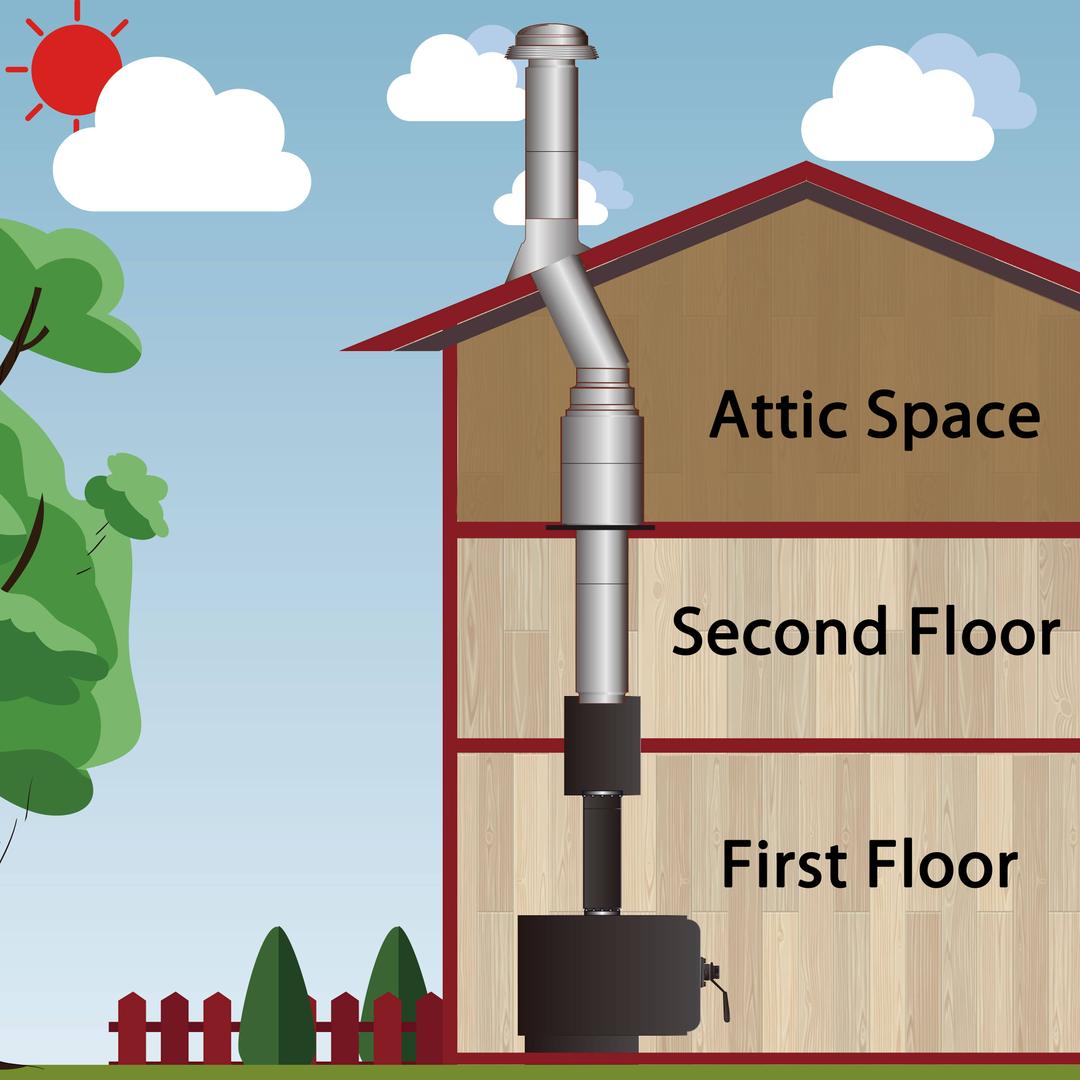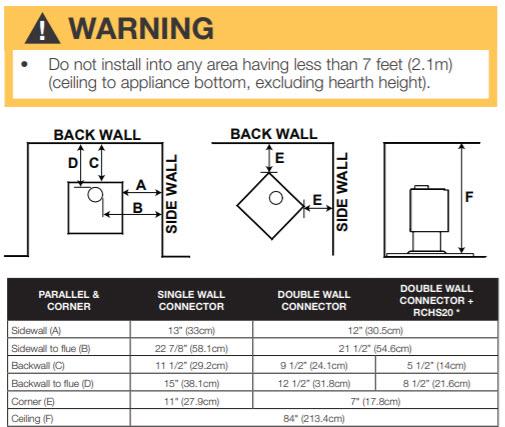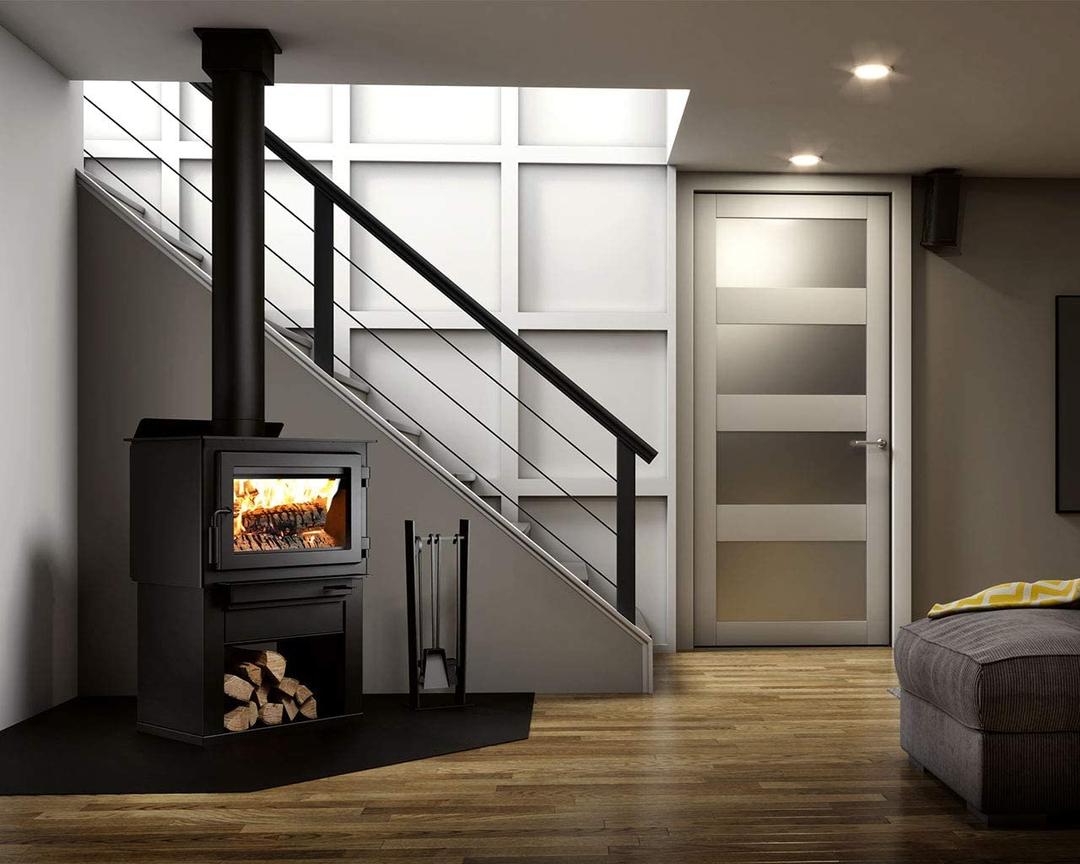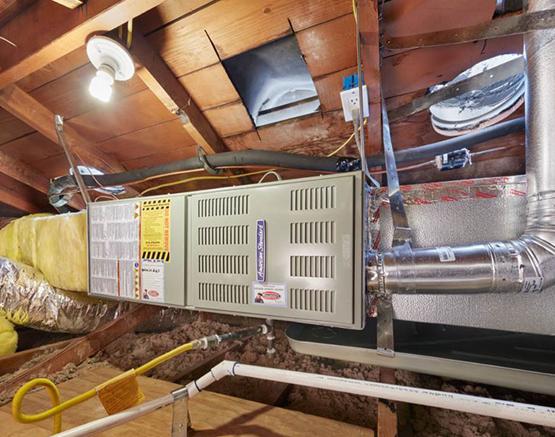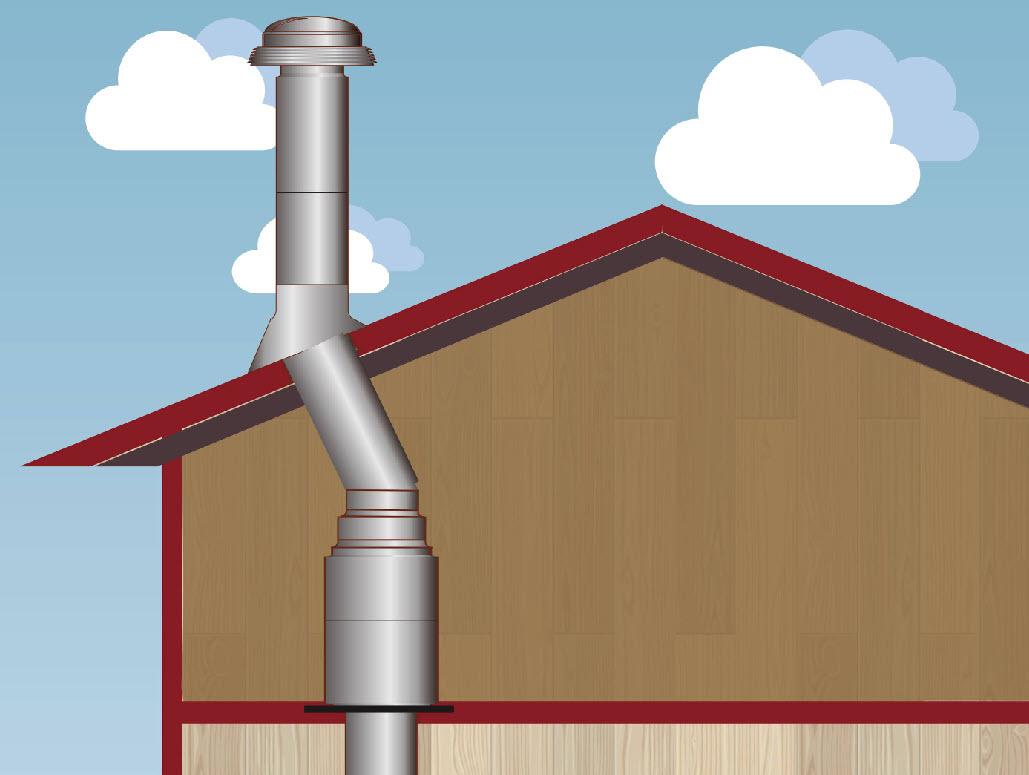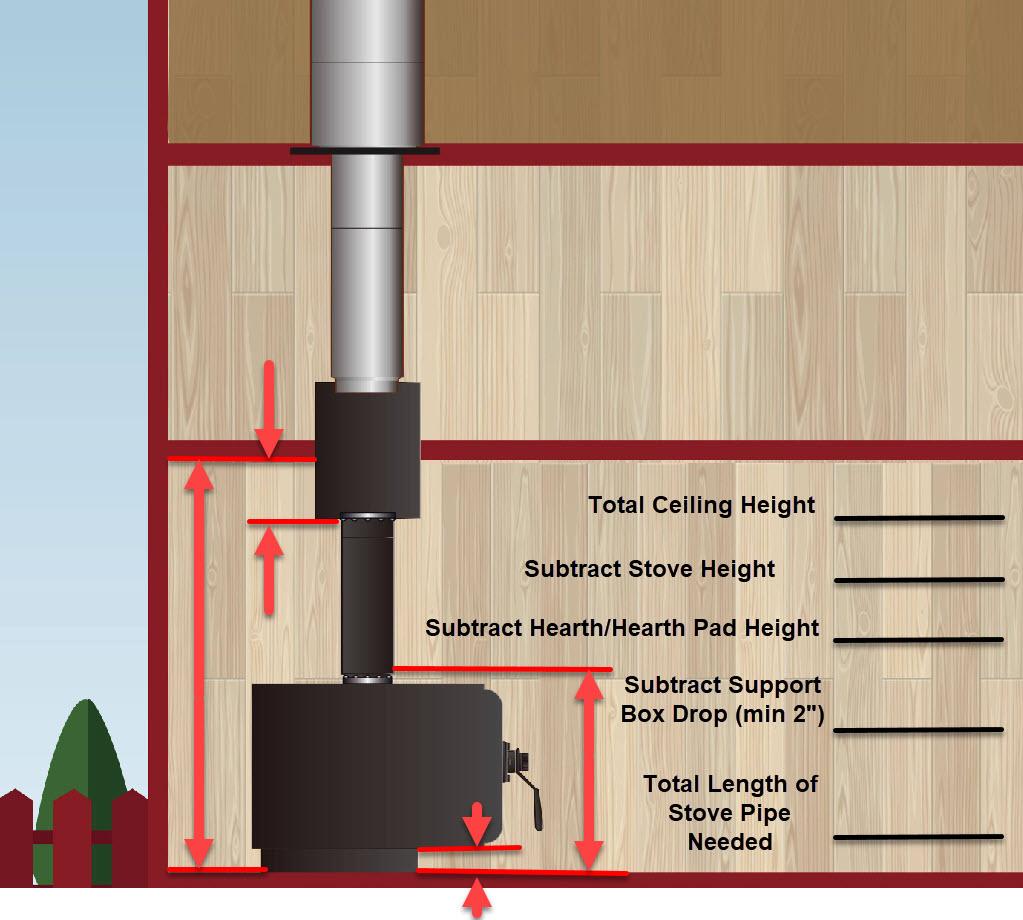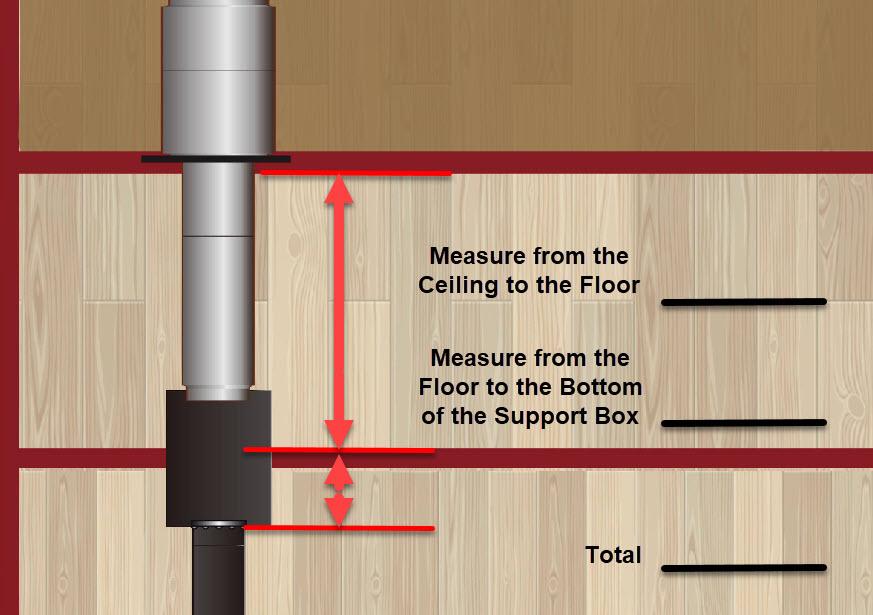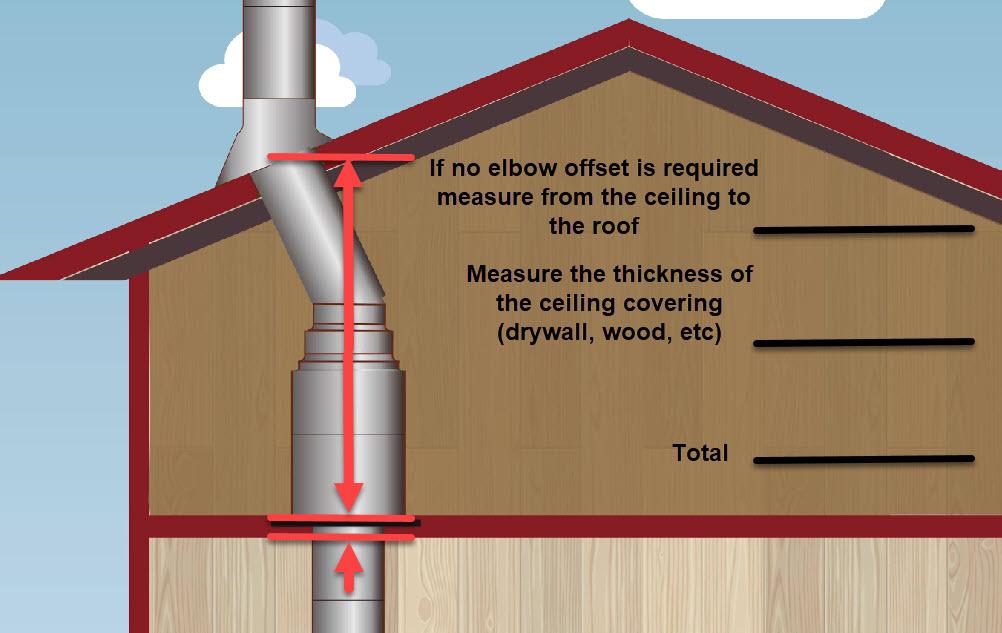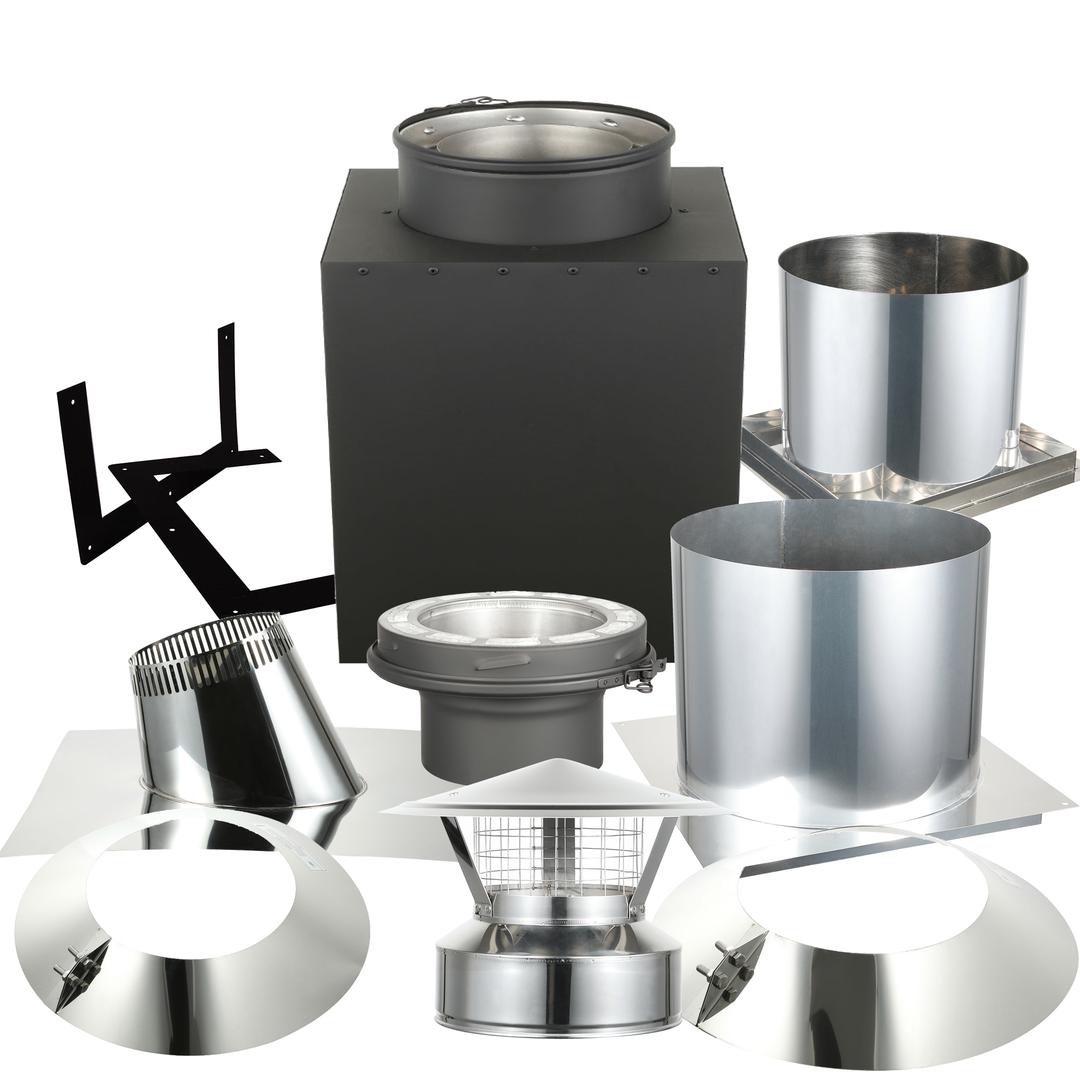Multi Story Planning Guide
This guide will walk you through the steps to plan a Multi Story chimney pipe installation. We will cover two story homes with notes for three or more story homes with an attic.
Note: this guide is for educational purposes only and does not supersede the installation manual or your local building codes. Please consult with a professional chimney installer and your local code enforcement officials for specific installation requirements.
Before you begin print our PDF "How To Measure for Multi Story Installation" and follow along.
Our Multi Story Kit includes everything you need to safely pass our Class-A chimney pipe through two stories and out the roof. If you need to pass through more than two stories all you need to add is one Firestop Radiation Shield for every story.
All you need to add is the Class-A chimney pipe and the single wall stove pipe to complete the kit.
If you have a multi story home but plan to run the pipe on the outside of your home check out our Through The Wall Planning Guide.
The first step to installing any heating appliance, a wood stove for example, is to read the instruction manual for the appliance and pay particular attention to the required clearance to combustibles.
All heating appliances will have requirements that dictate where an appliance can be placed in a room. Things like:
- Distance from the back and side wall to the flue when parallel
- Distance from the back and side wall to the back of the wood stove when parallel
- Distance from the back wall or side wall to the corner of the wood stove when positioned in a corner
- Distance from the floor to ceiling (take note if you are installing on a hearth)
- There may be special requirements if the stove is to be installed in an alcove
- Floor protection is required if the stove is to be placed on a combustible material like carpet, vinyl, wood, etc.
Be sure to check the required clearances to walkways, doors (open and closed), windows, drapes, furniture and anything else in the area.
A common mistake is to forget to "look up". Make sure there are no fixtures or shelves in the way above the appliance.
Single wall stove pipe requires a clearance three times the diameter of the pipe. For example a 6 inch single wall stove pipe requires 18 inches of clearance to combustible materials.
Things like fireplace mantels, ceiling fans, and beams can get in the way. All of this must be considered before you confirm your location for installation.
Once you have an idea of where you want to position your wood stove on the first floor take a look on the second floor to make sure you have space to run the pipe. Factory-built chimneys that pass through floors of buildings must be fully enclosed with approved walls. Please check your local building codes for more details.
Once you confirm the first and second floor are clear of obstructions and you have an idea of where the chimney will run through the ceiling of the second floor it's time to climb in the attic to confirm there are no obstructions.
Look for obvious obstructions like an HVAC unit, duct work, plumbing, electrical, or other obstruction that would inhibit your ability to install the chimney.
Assuming everything looks good the next step is to climb on the roof and do another preliminary inspection of the area. Just like the attic you want to look for obstructions that would hinder the installation of your chimney like bathroom vents, dormers, other roofs, etc.
If the attic and roof look clear you are set to move onto the planning stage.
Once you have an idea of where you plan to install your appliance it's time to mark the spot on the ceiling where the chimney pipe will go.
Place your appliance where you would like it to go and double check your clearances. If you do not have the appliance yet mark out a space on the floor based on the appliance specs. Be sure to mark the center of the flue on the floor as well.
Using a plumb bob or laser find the spot on the ceiling that lines up with the center of the flue collar on the appliance and make a mark.
This is your tentative mark where the chimney will penetrate the first floor. I say tentative because you may need to adjust the location of your appliance depending on where the floor joists are located.
Our Square Ceiling Support Box for 6" chimney measures 12.2" x 12.2" and 14.3" x 14.3" for 8" chimney. Both support boxes will fit between the floor joists with room to spare so your mark does not need to be perfectly centered between the joists but it does need to be centered enough for the support box to fit.
In an ideal situation the joists on the first floor will line up perfectly with the joists on the second floor and the rafters in the attic allowing you to pass straight up from the appliance through the second floor, into the attic, and out the roof.
However, if they do not line up it may be necessary to install an Elbow Offset. We offer elbows in 15 and 30 degrees. A 15 and 30 degree elbow can not be combined to make a 45 degree elbow.
When elbows are necessary to avoid obstructions use no more than two pairs of elbows in any one chimney system. Note: Elbow kits are sold in pairs as two elbows are required to complete an "offset". So to clarify you can use up to two elbow kits (one 15 degree and one 30 degree or two 15 degree or two 30 degree kits in a single chimney system).
Now that you've confirmed the location of your appliance and triple checked your clearances it's time to determine how much single wall stove pipe you will need for your installation. Take a measurement from the ceiling to the floor.
Now subtract the total height of the stove (measured from the bottom of the stove to the top of the flue collar) from the ceiling height. Subtract any hearth or hearth pad that the stove will sit on if applicable.
You also need to subtract the distance that the ceiling support box will extend down into the home. The support box must extend a minimum of 2" below the ceiling to meet clearances.
You only need to be close with your measurements here, not exact. Our single wall black stove pipe cannot be cut to size so you will need one of our telescoping lengths to complete your installation. This gives you lots of "play" in your measurement.
Now it's time to determine how much double wall Class-A chimney pipe you will need to complete your installation.
On the second floor measure from the floor to the ceiling. You also need to factor in the thickness of the floor and the support box drop (2" minimum) since the Class-A pipe runs to the bottom of the support box and connects to the twist lock connection.
There is no standard floor joist thickness so unless you cut a hole in the floor you won't know the exact thickness of the floor. In residential installations I like to estimate 11" since that is the total height of the support box and having a few extra inches of chimney pipe won't hurt anything.
Now it's time to climb in the attic and take your measurements.
Assuming there are no obstructions and your chimney can run straight through the attic simply measure from the ceiling to the roof. Then add the thickness of the ceiling covering (drywall, wood, etc).
If you're unsure of the thickness of the ceiling covering it's okay. Just add a couple of inches to be safe as a longer chimney will always draft better than a shorter chimney.
If your installation requires an elbow offset check out our How To Measure an Elbow Offset Guide.
Now it's time to get on the roof and take measurements.
Your chimney must terminate a minimum of 3 feet above the high side where the chimney penetrates the roof and a minimum of 2 feet above any obstacle within a 10 foot diameter of the chimney, including the roof itself.
This is known as the 3 foot, 10 foot, 2 foot rule.
Take a measurement to determine how much chimney pipe you will need above the roof. When in doubt it is always a good idea to make your chimney longer as a longer chimney will provide a better draft.
You will also need to know the pitch of your roof to purchase the correct roof flashing. If you do not know the pitch of your roof you can easily measure it. All you need is a tape measure and a level that is at least 12" long.
- Measure 12" on your level and make a mark
- Hold the level against the roof so the mark is on the bottom of the level
- Measure from the roof up to the mark on the bottom of the level (while holding the level... level)
This measurement is known as the "rise". If, for example, the measurement is 8" then your roof rises 8" for every 12" of "run". This is known as a 8/12 pitch roof.
If your roof is extremely steep and getting on the roof to measure it is not an option you can do the exact same thing in reveres on the inside of the house against the ceiling since both the ceiling and the roof are the same pitch in a cathedral ceiling.
Right this down so you know what roof flashing to select when purchasing your kit.
This completes our Multi Story Planning Guide. If you have any questions at all please don't hesitate to give us a call, send us an email, or click on the chat bottom at the bottom of your screen to chat with us live.
We're here to help!
Helpful Links:

